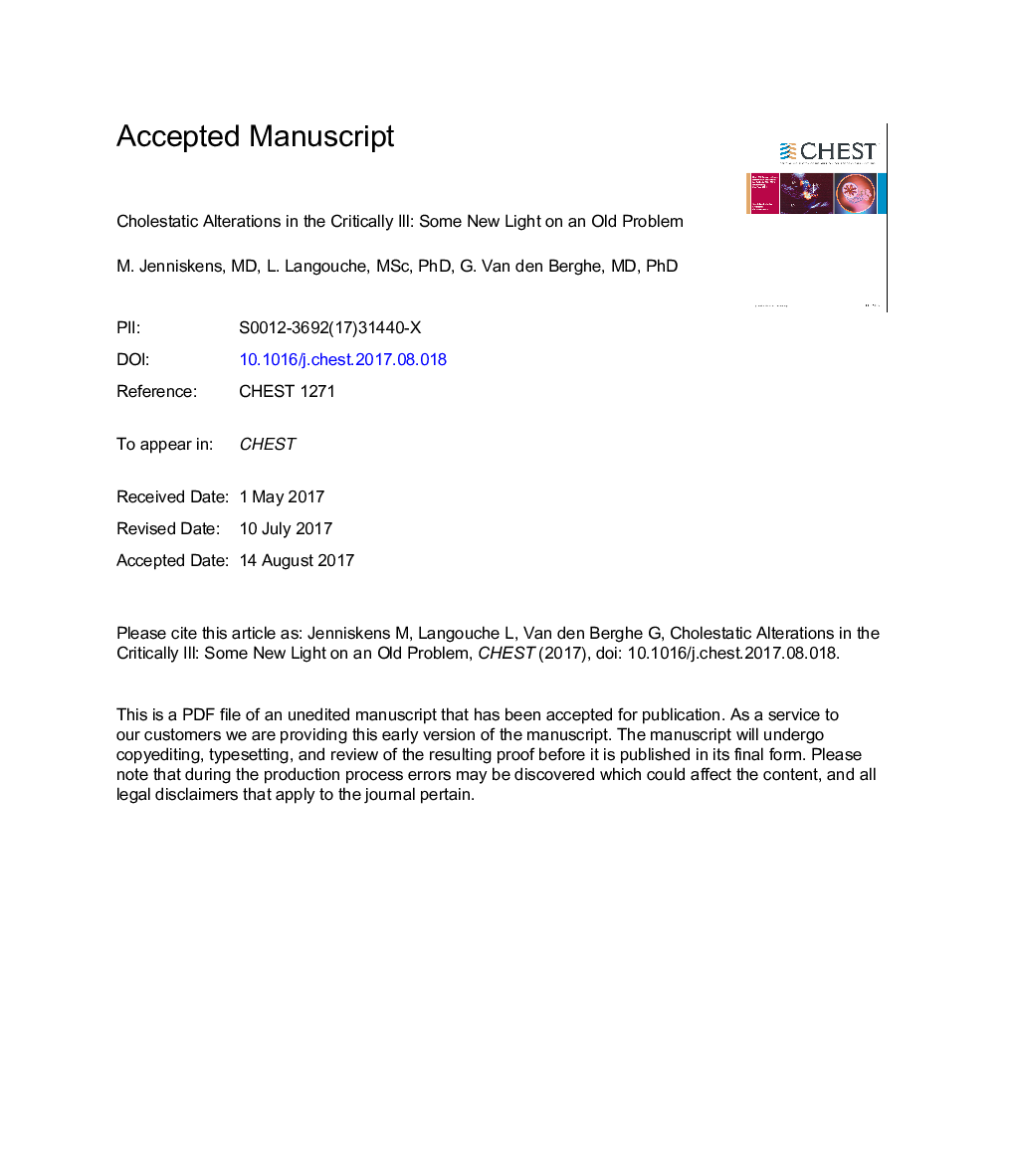| Article ID | Journal | Published Year | Pages | File Type |
|---|---|---|---|---|
| 8657996 | Chest | 2018 | 26 Pages |
Abstract
Liver dysfunction and jaundice are traditionally viewed as late features of sepsis and other critical illnesses and are associated with a complicated ICU stay. However, study results suggest that cholestatic alterations occur early in the course of critical illnesses, perceived only as minor abnormalities in routinely used biochemical liver tests. Inflammation-induced alterations in the transport of bile acids (BAs) appear to drive BAs and bilirubin toward the systemic circulation. Ongoing BA synthesis with an, at least partial, loss of feedback inhibition further contributes to elevated circulating BAs and bilirubin. To what extent these changes reflect a biochemical epiphenomenon, true illness-induced liver dysfunction, or a beneficial and adaptive response to illness should be investigated further. Because of the lack of specificity of standard laboratory tests, especially in the context of a complex systemic condition such as critical illness, identifying true cholestatic liver dysfunction remains a great challenge. However, high levels of cholestatic markers that are sustained in patients with prolonged critical illness almost always indicate a complicated illness course and should be monitored closely. Preventing cholestatic liver dysfunction comprises minimizing inflammation and hypoxia in the liver and preventing hyperglycemia, avoiding early use of parenteral nutrition, and reducing the administration of avoidable drugs. Future research on the effects of BAs and on modulating underlying drivers of cholestasis induced by critical illness is warranted as this could open perspectives for a targeted diagnostic approach and ultimately for novel therapies to improve outcome.
Keywords
Related Topics
Health Sciences
Medicine and Dentistry
Cardiology and Cardiovascular Medicine
Authors
Marc MD, Lies PhD, Greet MD, PhD,
